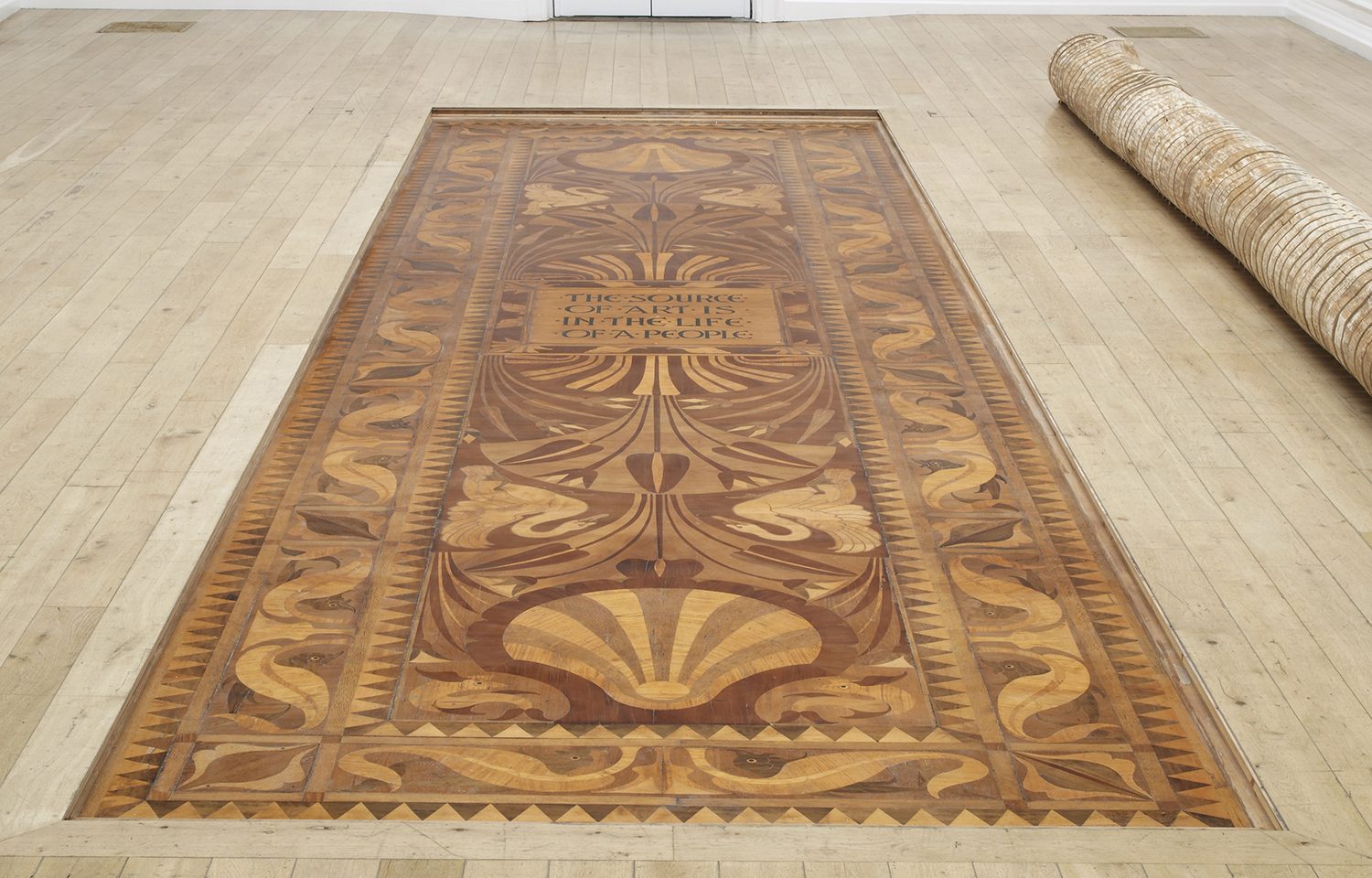The South London Art Gallery, built in the grounds of Portland House on Peckham Road, opened in May 1891. In the centre of the newly constructed main gallery was a large marquetry floor panel with an intricate design that included shells, swans and flowers created by Walter Crane (1845-1915). The Gallery’s precarious finances meant that the panel ended up being a gift not only of Crane but also of the company who made it, Charles Steinitz & Co, at an estimated cost of £100. The medium was unusual for Crane (better known as a book illustrator) but its motifs are found in his other work. An original drawing for the design is now in the collection of the Victoria and Albert Museum. Notably absent from this drawing is the inscription at the centre of the panel: ‘The Source of Art is in the Life of a People.’ This statement, which still resonates today, was added when the gallery was remodelled slightly in 1897.
Crane is perhaps best known for his illustrations for children’s books but he was also a social activist, and his beliefs were very much in line with the founding ethos of the South London Art Gallery: to be free and open to all. In part influenced by William Morris, with whom he had a close association, Crane became a committed socialist. For a long time, he contributed weekly cartoons to the socialist periodicals Justice, the Commonweal and the Clarion. In his 1892 book The Claims of Decorative Art, he reasoned that art cannot thrive in a society where wealth is unevenly distributed, arguing that socialism would enable the unity of utility and aesthetics. Like Morris, Crane was a champion of decorative art, and called for the integration of beauty into daily goods such as wallpaper, textiles and other household furnishings. There are examples of some of his wallpaper designs in the South London Gallery’s historic collection, for example Peacock Garden which won a gold medal at the Paris Exposition Universelle in 1889.
The original floor was covered over sometime after the gallery re-opened after the Second World War. In recent years, however, the Crane panel has been revealed during several exhibitions: Permeations: Light in the Attic (1993), Rose Garrard: Arena for Conversation (1994), and the Walter Crane: Floor and Exhibition (2001). In 2016, it played an integral role in Roman Ondak’s solo exhibition; Ondak even adopted the floor’s inscription as the title of the show, one of the central themes of which was the coming together of past and present. Even when not seen, the hidden panel has inspired artists. Goshka Macuga incorporated the floor design into her commission for the 2007 exhibition Perfectly Placed. More recently, throughout Haegue Yang’s solo show, 26 artificial productions of human speech repeated the words ‘the source of art is in the life of a people.’
